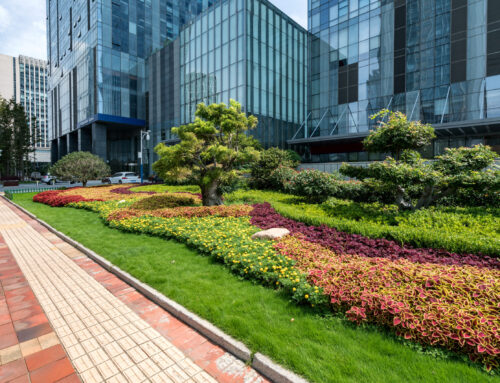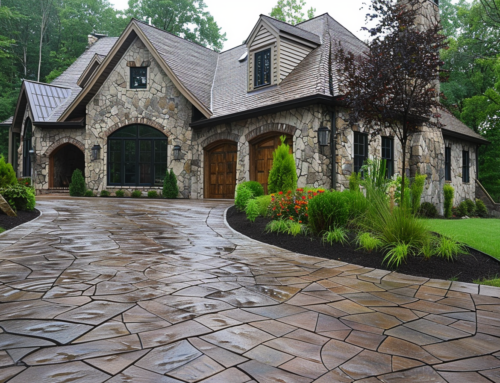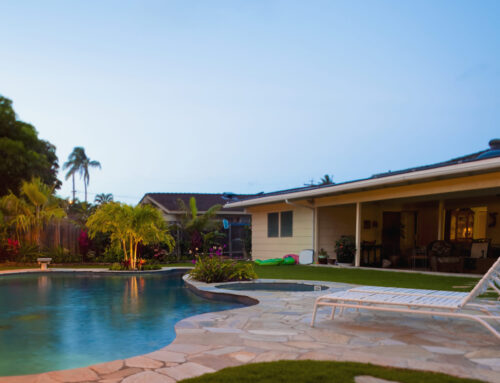Analysts expect the global sprinkler system market size to exceed $3 billion by 2026. Many smart homeowners have already turned to this irrigation method for enhanced lawns and gardens.
Do you want the best home irrigation system but aren’t sure which type is right for you? It’s important to know all of your options before you call residential irrigation companies.
The following guide will explain the best irrigation system for lawns and gardens available today. Read on and decide which sprinkler benefits meet your needs and budget.
Spray Sprinkler Systems
Spraying sprinkler systems are the most common home irrigation option. Sprinklers are most effective when you have large groupings of similar plants. So, sprinklers work perfectly for watering grassy lawns.
Sprinklers water lawns early in the morning or later in the evening during the Summer. Watering overnight ensures that roots get soaked to reduce evaporation.
Water is likely to evaporate if you water mid-day and leave your lawn vulnerable to high heat. Luckily, you can set timers on sprinkler systems so you always water at the perfect time of the day.
An experienced installer will place sprinkler heads exactly where they’re needed. Proper placement ensures that your lawn gets the right amount of water. It’s also important that the sprinkler heads aren’t in the way of anything.
Our experts also custom design the system to meet the exact needs of your property. For example, you might require backflow preventers or custom water meters.
Rotor Sprinkler Systems
Rotor systems work very similarly to a traditional sprinkler system. The main difference is that rotors use a rotating water stream in a fixed pattern.
They use a mechanism that lets the whole sprinkler body spin around. Rotor systems work best for larger landscape areas that exceed 18 feet in width.
The systems are better at distributing water evenly and precisely when compared to spray head sprinklers. Rotor sprinklers are also very effective at watering sloped lawns and other odd areas.

Drip Irrigation Systems
Drip systems are great alternatives to underground sprinkler systems. They’re typically used by gardeners that have several varieties of plants.
They also allow landscapers to precisely water certain plants at the best times of the day. Drip systems work by using porous hoses to send water straight to the plant roots.
Mid-day evaporation is minimal because the roots are usually shaded by the plants themselves. Drip systems can also be set on timers just like lawn sprinklers.
You can attach emitters to drip systems that will regulate water flow to specific plants. The precision provided by these systems saves gardeners time and prevents errors.
Drip systems often use less water than sprinkler systems. This is because there isn’t runoff or water waste. The slow water flow is also better absorbed in tough soils like sand and clay.
Bubbler Irrigation Systems
Bubbler systems mix the benefits of sprinkler and drip systems. They produce large amounts of water like sprinklers but only sit about 6 inches above the ground. So, they water plants from their roots like a drip system.
They can also run on timers and emitters to water specific plants and certain times. Bubblers are perfect if you have several similar plants in a small area. Shrubs, trees, and raised plant beds tend to thrive with bubbler systems.
Carefully examine plant types when choosing between bubbler and drip systems. Drip systems are more versatile for areas with a lot of plant variety. Bubblers often work better for big plants and homogeneous garden areas.
You can also use a combination of irrigation systems if needed. For example, bubbler nozzles can be attached to sprinkler heads. This allows specific areas of your yard to use the bubbler method and other areas to use the sprinkler.
Rain Catching Irrigation
Rain barrels aren’t as versatile as other systems, but they are more affordable. They deliver rainwater to plants using gravity. Consider this option for small gardens and if you live in an area that gets a lot of rain.
You can’t modify the barrels or hoses with emitters or timers, but they’ll lower your water bill. They can even supplement other irrigation systems to cut down on overall water usage.
Unfortunately, some states have regulations for rainwater harvesting. Make sure to check out your local laws before purchasing a rain barrel.
Buried Reservoirs
Buried reservoirs aren’t typically used in modern gardening but have become more popular recently. The process involves burying containers filled with water in your garden. Clay containers called ollas are best for this method.
This irrigation relies on the tension between wet soil and dry soil. So, if the soil around a buried olla dries out it will pull moisture from the container. Water stays in the olla if the soil is still wet from recent rain.
Buried reservoirs typically hold 2 gallons of water and cover about a 3 to 4-foot range. It’s an eco-friendly irrigation method similar to rain barrels but is not suitable for all situations.
Choosing Your Home Irrigation System
Now you know the types of home irrigation systems available today. Will you be installing a sprinkler system, drip system, or just catching rain? Always consider the size of the area you’re watering and the different plant types.
We hope you’ve found this guide on residential irrigation options helpful. Bayside can help you get a watering system professionally installed. Please contact us with any more irrigation questions or to request an appointment.








